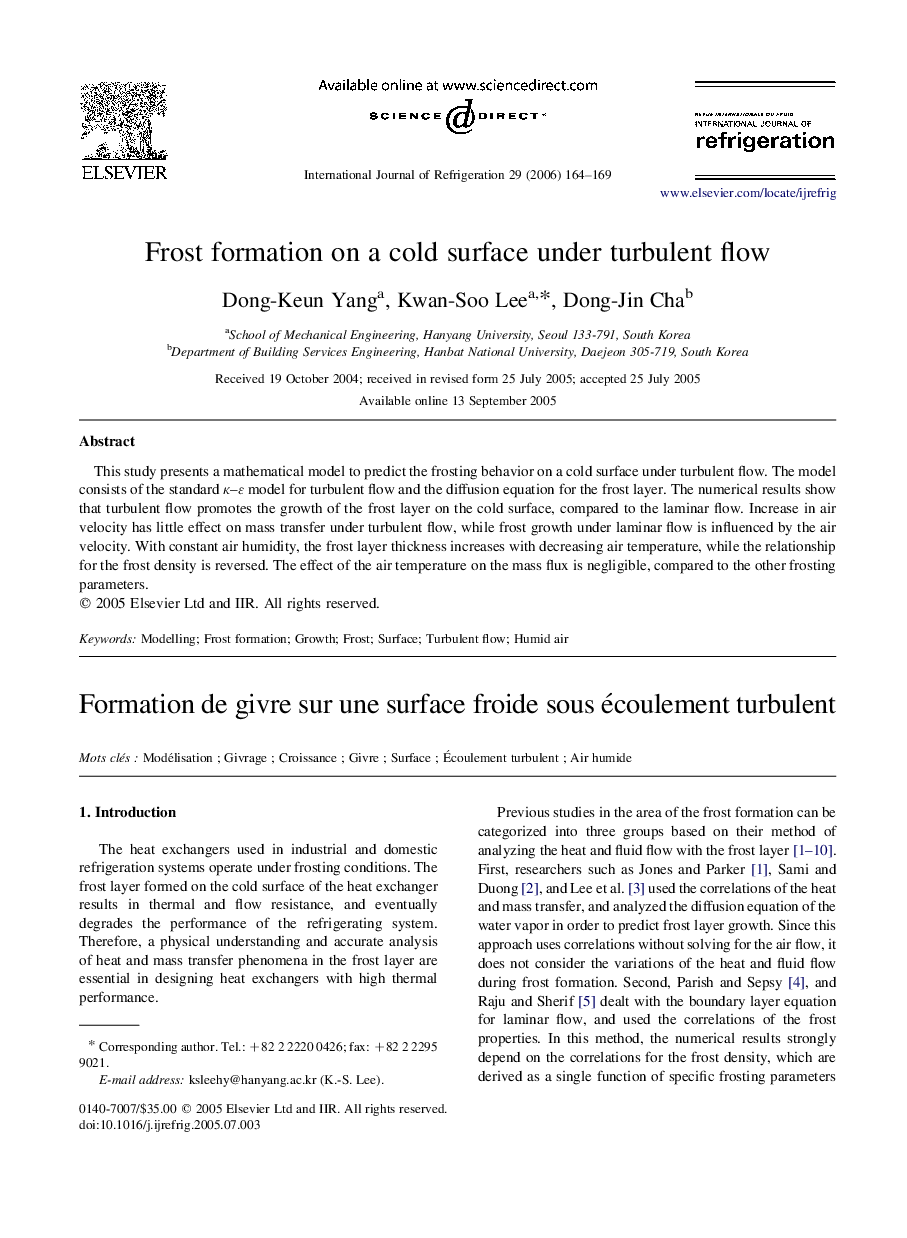| Article ID | Journal | Published Year | Pages | File Type |
|---|---|---|---|---|
| 793000 | International Journal of Refrigeration | 2006 | 6 Pages |
This study presents a mathematical model to predict the frosting behavior on a cold surface under turbulent flow. The model consists of the standard κ–ε model for turbulent flow and the diffusion equation for the frost layer. The numerical results show that turbulent flow promotes the growth of the frost layer on the cold surface, compared to the laminar flow. Increase in air velocity has little effect on mass transfer under turbulent flow, while frost growth under laminar flow is influenced by the air velocity. With constant air humidity, the frost layer thickness increases with decreasing air temperature, while the relationship for the frost density is reversed. The effect of the air temperature on the mass flux is negligible, compared to the other frosting parameters.
